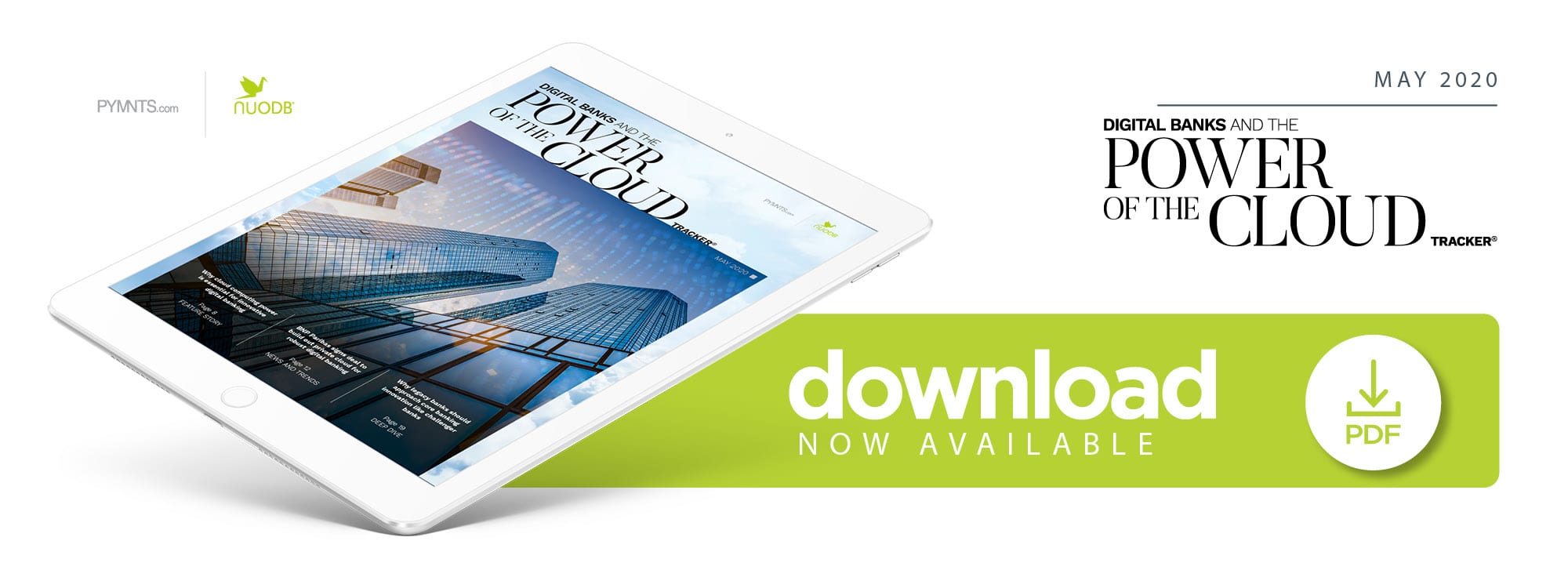Deep Dive: Legacy Banks And The Infrastructure Stumbling Blocks Keeping Them From The Cloud

An expanding number of challenger banks have eschewed the industry’s traditionally slow and steady innovation approach.
These banks are offering digital or mobile-only platforms powered by cutting-edge technologies like artificial intelligence (AI), biometrics and machine learning (ML) to fulfill users’ needs with greater speed and a little more flair. Legacy banks have been obliged to pick up the pace to stay competitive. Many banks are still facing one large barrier to faster digital development, however: their core banking infrastructures.
This is not for lack of trying or lack of funds. Ample financial institutions (FIs) have the technological ability and budgets, but they first must graft those products into their legacy systems. Forty-three percent of established U.S. FIs still use systems that were first built on the 1959 programming language COBOL and are adding new layers of infrastructure on top of these original systems to support the latest banking tools. This enables banks to create and launch digital products in a way that helps them compete, but also makes them more prone to outages.
Banks must upgrade their legacy infrastructures swiftly as challenger banks and FinTechs may take advantage of outages or lagging service times that cause customer frustrations. Even markets like the U.S., where there are only approximately 40 challenger banks operating at present, have seen consumers paying more attention to these entities in the past couple of months thanks to the entrance of European competitors such as Monzo and N26. Chime is one native U.S. digital player that has seen steady growth, and it now dominates 60 percent of the country’s challenger bank market.
Legacy banks are therefore starting to view their outdated infrastructures as a more pressing issue, with one 2019 study noting that 46 percent of bankers now view this as their biggest hurdle to achieving future growth. The following Deep Dive examines how large a problem these outdated systems represent; what technologies, such as the cloud, can do to help; and how FIs can best integrate cloud solutions into their digital banking platforms.
Legacy Systems Lead to Legacy Thinking
FIs struggling to run banking platforms on six-decade-old infrastructure face the same problem as many other essential services that cannot slow down to make upgrades. High passenger volume rarely allows New York City’s Metropolitan Transportation Authority (MTA) the time it needs to do maintenance that will leave rails running more smoothly, for example. The MTA shuttered all of its lines for the first time in its 115 years of existence to deeply sanitize trains and stations amid the COVID-19 pandemic and to complete much-needed maintenance and extensions for well-traveled lines. COVID-19, however, has not afforded legacy banks the same opportunity to repair weaknesses in their banking platforms. The pandemic has increased the amount of digital traffic for FIs as more consumers have gone online to manage their finances.
Banks therefore need to balance providing 24/7 year-round service without outages that will frustrate user bases. American consumers’ confidence in banks dipped in 2018 to just 33 percent, according to one survey. Wells Fargo saw a massive data outage in 2019 due to smoke detected at one of its data storing facilities, for example, leading to the automatic shutdown of its servers and ATMs and leaving its customers unable to use their debit cards or access their digital banking accounts.
The potential for digital shutdowns due to the expanding data flow from COVID-19 is a very real fear within the banking industry, especially when large-scale outages mean customers would be greatly stripped of access to their accounts as they follow stay-at-home orders. Customers who do experience glitches are also more likely to look for alternatives to these services, and options in the financial industry are abundant. Established banks are therefore taking steps to avoid these missteps, although approaches to innovation may also be outdated.
Following the 80/20 Rule
Recent research suggests that FIs may be upgrading their legacy infrastructures from the wrong angle. Thirty-four percent of bankers in a 2019 survey noted that a lack of IT talent — or the in-house training resources required to cultivate it — were the biggest challenges to implementing more innovative technologies, for example. This concern over in-house talent may also be a holdover from previous decades of banking, especially when compared to how challenger banks are approaching innovation and infrastructure support.
What is most critical about challenger banks’ approaches is that many of them are not attempting to build out their own systems, instead taking advantage of partner services’ existing capabilities. Challenger banks operate by cultivating mastery over one, more narrow banking aspect, leaving support for other features in partners’ hands. This strategy also applies to how many of them view core banking infrastructures.
Challenger banks appear to be following a principle known as the 80/20 rule, which suggests that 20 percent of their activities will account for 80 percent of their results. Challengers are applying that 20 percent to the cost of partnering with third-party cloud providers and computing resources, and letting the results speak for themselves. More challengers are using third-party cloud providers to support their services at scale, including N26 and Starling Bank. Monzo is turning to both AWS and Google Cloud for its data storage.
It may be time for legacy banks to begin reorganizing their core banking innovation strategies with this rule in mind. Many FIs have taken tentative steps toward this strategic change by spending $20 billion on public cloud services in 2019. Another study predicted that the money spent on cloud-native technologies and partners will continue to grow, reaching $411 billion by 2022.
Creating cloud-based strategies could have a noticeable effect on the ways that banking relationships between challengers, FIs and their customers continue to progress in the future. The continued use of COBOL in 2020, for example, and the crashing of mainframe systems has led to widespread problems across various states as citizens wait to collect unemployment checks. FIs that do not consider changes to their infrastructure strategies will repeatedly deal with such issues until they think like challengers and fix them.

